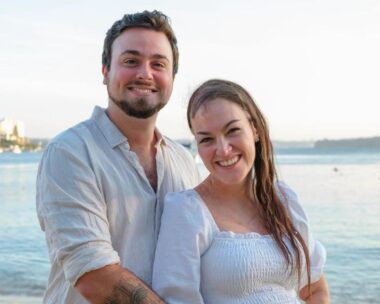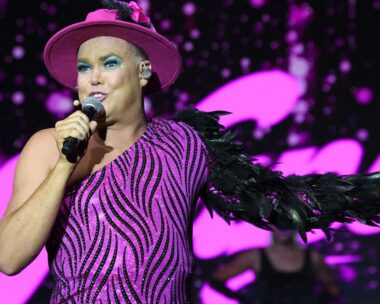The Press Council considered a complaint by Chrissie Swan about an article published by Woman’s Day in print, headed “It’s McHappy day!”, on 27 March 2017.
Above the headline, the article featured a large photograph of the complainant walking with her three children caught unawares by a photographer. It was accompanied by a caption which read “STAR SPOTTER Your favourite stars … caught on camera”. Another caption next to the youngest child, whom it named, said she “leads the way!”, and another much smaller caption said “Chrissie’s Nova radio segment was just announced Melbourne’s number-one brekkie show”. Two smaller photographs showed the complainant in a car, apparently in the drive-through of a McDonald’s, one captioned “Drive-through Maccas is every kid’s dream treat!” The article began: “These guys must’ve been doing their chores!” and said the complainant treated her children—stating their names and ages—”to a lunch date at McDonald’s”. It noted the complainant had previously expressed a wish to have more children.
The Council’s Standards of Practice require publications to take reasonable steps to avoid intruding on a person’s reasonable expectations of privacy (General Principle 5) or causing or contributing materially to substantial offence, distress, prejudice or risk to health or safety (General Principle 6), unless doing so is sufficiently in the public interest.
Ms Swan said her complaint was not about the coverage of herself but of her young children. The photograph showed them in an unflattering light, one with a pacifier and a security blanket and another with a pacifier. She said the effect of the picture was to expose the children to ridicule. The photograph had been taken without her knowledge or approval, and the article caused considerable distress to her family, made the children feel unsafe, and exposed them to threats and abuse, especially cyberbullying.
She said that about five years previously she and two of her children had been photographed on an unpaid basis for an article published in another magazine, which resulted in significant and painful criticism of her and her children. Since that time she had taken steps to keep her children out of the media. She said she engaged in publicity at the behest of her employers, arising from contractual obligations for a television or radio show she was appearing in, but typically this did not involve her children. Exceptions to this included photographs of her then newborn baby released to try to contain attention from photographers, an unpaid photograph she consented to for a charity for women, and some footage of her son taken without her approval when he came to meet her at a television production, which the producer agreed to significantly limit for broadcast.
The complainant said she enters into agreements with publicists to ensure her children are not photographed or reported on at events they attend with her. If that agreement is not reached, she attends without her children. She said her children do not have any commercial endorsement or representation arrangements with anyone, are not in the media industry and are not in the public domain or of any interest to the public.
Ms Swan said she no longer posts photographs to her social media accounts that identify her children’s faces, even if only her ‘friends’ can see them. While images of her children were obtainable via a Google search, these were mostly unauthorised photographs taken while they were going about their lives. Others were taken from a private Facebook page, which she had since deactivated, or sourced from acquaintances. She said some photographs of her children on her Instagram account were obscured, showing only part of their faces, and presenting them positively.
The publication said the article was positive and not disparaging, simply depicting an ordinary public outing of the kind enjoyed by many Australian families. It said a significant proportion of its editorial content was focused on documenting the lives of celebrities and their families, in which the public was very interested. The publication said it was aware of the sensitivities associated with images of children and it refrained from publishing photographs of children who were not ‘in the public eye’. However, it disputed the complainant’s view that she had not placed her children in the public eye in the last five years. It said there were many instances of the complainant having done so, including publishing a memoir which discussed her children, giving television and magazine interviews and hosting a radio show in which she mentioned her children, and posting several photographs of her children to Instagram.
It noted that, unlike a number of other celebrities, the complainant had not contacted it at an earlier stage to seek a general agreement to not publish photographs of her children. It also said that, at the request of the complainant, it did not publish the article online.
The publication said that on the information available to it at the time of publication, it believed the complainant chose to publicise images of her children, including by entering into contracts with commercial incentives. It said the complainant regularly published photographs of her children to social media accounts on which she has a significant public following, and Internet searches revealed multiple posed photographs of the complainant and her children. The publication maintained it was reasonable to publish the article at the time; however, it said it would take into account the complainant’s concerns and the degree to which she has placed her children in the public eye in any future editorial consideration of images of her children.
Conclusion
The Council notes that the photograph of the complainant and her children was taken without her consent or knowledge. Children have a reasonable expectation of privacy, although this can be limited in various ways, in particular by what their parents do or cause the children to do. Particular care is required when publishing material concerning children, given that children have a limited degree of choice. This will involve exercising judgment in individual cases.
The Council notes that the complainant (but not her children) is a celebrity; a public figure with a reduced expectation to privacy. It accepts that, while the complainant had shared information about her children on radio, in print and on television—and that one of her children made a brief appearance with her on a television show—she made efforts in recent years to reduce their public exposure, particularly in relation to images which would identify them. The Council does not consider that the complainant’s sharing of information about her children in the media—particularly instances where the complainant talked solely about her children—resulted in their being able to be considered as consistently ‘in the public eye’. Nor does it consider that the comparatively small number of photos of the children on the complainant’s Instagram account lessened their reasonable expectations of privacy.
The content of the article, except for one small caption, concerned the private life of the complainant and her children. On the material available, the Council is satisfied that the level and nature of engagement with the media by the complainant and her children did not reduce the children’s reasonable expectation of privacy so as to justify the article’s intrusion on that expectation. Although members of the public might have found the photographs of interest, the Council considers that their publication was not in the public interest so as to justify the level of intrusion. Accordingly, the publication breached General Principle 5.
The Council considers the article was likely to cause substantial distress to the family. In publishing the article with the unauthorised photograph of the children with their pacifiers and a security blanket visiting “Maccas” with the accompanying caption “… caught on camera”, the publication failed to take reasonable steps to avoid causing substantial offence, distress or prejudice. Nor did any public interest justify this. Accordingly, the publication breached General Principle 6.
Relevant Council Standards
This adjudication applies the following General Principles of the Council.
Publications must take reasonable steps to:
Avoid intruding on a person’s reasonable expectations of privacy, unless doing so is sufficiently in the public interest.
Avoid causing or contributing materiality to substantial offence, distress or prejudice, or a substantial risk to health or safety, unless doing so is sufficiently in the public interest.




